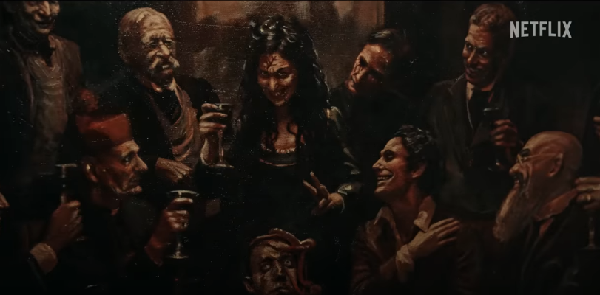My wife and I recently had a baby, so my television time is limited these days, but I made sure to check out the H.P. Lovecraft adaptations in Guillermo del Toro’s Cabinet of Curiosities.
My wife and I recently had a baby, so my television time is limited these days, but I made sure to check out the H.P. Lovecraft adaptations in Guillermo del Toro’s Cabinet of Curiosities. After finishing them, it seemed like they weren’t so much adaptations as reimagining’s. I’m going to be discussing some of the differences from the episodes and the source material below, beware of spoilers.
Starting with Pickman’s Model, the sets and costumes were outstanding. This was a true period piece and it looked great. The first big change was the setting. Pickman’s Model is a rare HPL story set in Boston, but the episode is moved to Lovecraft’s fictional town of Arkham. Interestingly, Dreams in the Witch House also has its setting changed as it goes from taking place in Arkham to taking place outside Boston instead. I’m not sure what made the writers decide to swap the settings, but it was fun seeing Arkham and Miskatonic University. The second change was to the Elder Sign. In Lovecraft’s stories the Elder Sign is a protective ward, but in Pickman’s Model it is associated with evil as those who view Pickman’s paintings carve it into their heads. The characters of Thurber and Pickman both appear, but, unlike in the short story, they aren’t friendly toward each other past the opening section of the episode. Overall, Pickman’s Model seemed more inspired by the idea of art driving you insane then the short story that shares the episode’s name.
Dreams in the Witch House keeps none of the plot of HPL’s original story. Instead, Rupert Grint stars as Walter Gilman, who shares no likeness with the character from the source, as he searches for his lost twin sister by using a drug to reach another reality. Similarly, Keziah Mason and the Witch House appear in the episode in equally altered forms. Brown Jenkin is translated to the screen relatively faithfully, in comparison to the other elements from the story. I couldn’t help wondering if the episode would’ve been better without any connection to Lovecraft as fans of HPL’s work had expectations that weren’t fulfilled by the radically changed plot. Regardless, it’s a fun hour of streaming, once you set aside any illusions about it being an adaptation.
Having watched both episodes, I did find myself longing for two older adaptations of the same stories. Stuart Gordon did a phenomenal version of Dreams in the Witch House in Masters of Horror, and Rod Serling’s Night Gallery had a fun interpretation of Pickman’s Model. I suggest checking those out if you haven’t already. Also, if you love Lovecraft, check out our discussions of Dreams in the Witch House and Pickman’s Model that David Henry did leading up to the release of these episodes.
